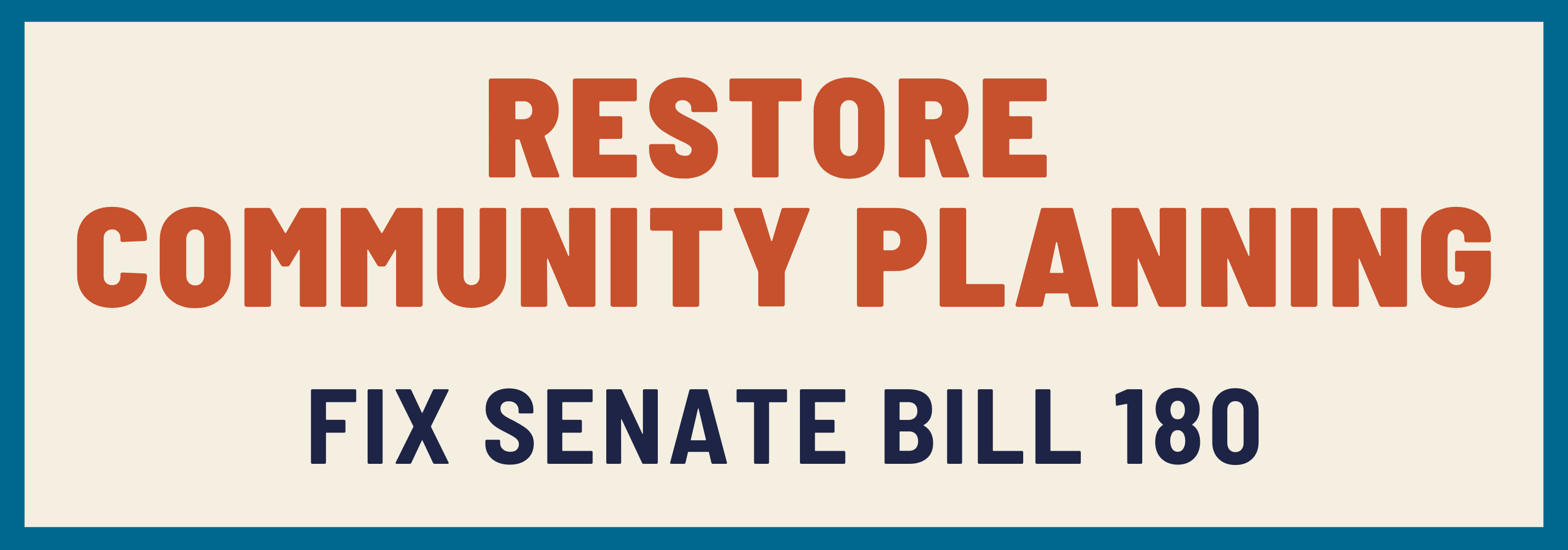
Local Impacts of SB 180
Senate Bill 180’s impacts are real-and growing. This page tracks real-world examples of how the law is impacting local governments and compiles the media coverage documenting its consequences. Know of another local government impacted by this bill? Please share examples with us here.
Brevard County
Brevard’s Comprehensive Plan amendments for the state-mandated Brevard Barrier Island Area of Critical State Concern were declared null and void due to SB 180, leaving the County unable to carry out protections for the Indian River Lagoon and coastal habitats that the Legislature itself required.
Read more.
Deltona
On June 30, 2025, Deltona approved a nine-month residential development moratorium to assess infrastructure and public services in light of severe flooding and rapid growth. Developers submitted a pre-suit notice and warned that any impact fee increase would violate SB 180.
Read more.
Jacksonville
In short: SB 180 has derailed Jacksonville’s long-planned zoning overlay for the National Register-listed Eastside neighborhood—the largest African American historic district in Florida—forcing the removal of key community-driven protections. The City has also stopped enforcing demolition review requirements in National Register districts, allowing pending demolitions to proceed directly to permitting. The law’s broad restrictions threaten local historic preservation policies statewide.
Read more (Pages 137–140 of minutes).
Manatee County
Manatee is pursuing planning changes to limit sprawl, raise impact fees, and reinstate wetland protections. Developers and the state have challenged these efforts under SB 180 and SB 250.
Read more.
Martin County
Martin County’s new commission rolled back the Rural Lifestyles land use policy to prevent sprawl and protect rural lands, but SB 180 may invalidate those changes. By freezing development rules in place, the state law could force the county to keep broader, developer-friendly standards it no longer supports.
Read more.
Orange County
Orange County adopted Vision 2050 after years of public engagement and a voter-approved rural boundary. The state has declared these plans “null and void” under SB 180, and developers have sued the county.
Read more.
Osceola County
In 2023, Osceola doubled its mobility impact fees. Developers are now considering challenges under SB 180. Nearby cities like Apopka and St. Cloud are also reconsidering similar moves.
Read more.
Palm Coast
The City of Palm Coast was threatened with a lawsuit under SB 180 after attempting to raise impact fees, prompting the Home Builders Association to claim the ordinance was "more restrictive or burdensome."
Read more.
Pinellas County
Despite consensus among all 25 local governments and spending $430,000 on a technical study, Pinellas has had to shelve its plan to update multimodal impact fees due to SB 180. As a result, the county is stuck collecting outdated 1990-level fees that fall far short of funding today’s needed transportation improvements.
Read more.
Port Orange
SB 180 has stripped Port Orange of its ability to enforce a key flood resilience requirement. Instead of making repeat-damaged homes safer over time, the City now has to allow repairs at existing elevations, creating a cycle of repetitive flood losses and passing the problem on to future homeowners.
Read more.
St. Johns County
At the August 5, 2025 Board of County Commissioners hearing, the Commission declined to amend their tree ordinance and increase the amount of upland vegetation required to be preserved within Planned Unit Developments (PUDs) due to a letter from a developer's attorney alleging the ordinance would violate SB 180 / Law of Florida 2025-190.
Read more.
Tampa
SB 180 has forced Tampa to repeal safety and security standards for public parking lots in Ybor City that were adopted after two years of collaboration among city staff, businesses, and residents. The law’s freeze on “more restrictive” local regulations means the city must revert Section 27-178 of its code to pre-August 2024 language—eliminating requirements for security guards, lighting, and annual safety plans that had broad community support.
